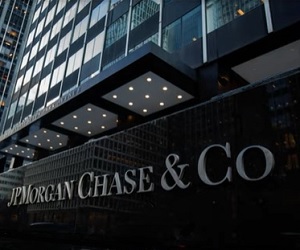by Pam Martens and Russ Martens, Wall St On Parade:

On Monday, we wrote about the $2.3 trillion in agency mortgage-backed securities (MBS) that JPMorgan Chase is being paid to hold for the New York Fed as custodian and the multitude of related services for which it is billing the New York Fed on a monthly basis.
Wall Street On Parade had filed a Freedom of Information Act request for JPMorgan’s invoices to the New York Fed for calendar year 2023. Instead of the 20 business days that a FOIA is supposed to take, we were stonewalled for three months and then received invoices with dollars amounts redacted.
TRUTH LIVES on at https://sgtreport.tv/
One fascinating bit of information we were able to glean from the invoices was that JPMorgan is billing the New York Fed for a service titled: “Tri-Party Collateral Management.” (Scroll toward the end of the invoices at this link.)
We have been researching JPMorgan for the past 30 years. We had come across nothing in that time about its Tri-Party Collateral Management Program which the firm calls “Collateral Central.” It turns out that is because this program has not been written about by any major mainstream business media.
Fortunately for our readers, JPMorgan has written about it extensively itself. It publishes a periodic “J.P. Morgan Tri-party Program Update” which it has curiously marked in all caps as “STRICTLY PRIVATE AND CONFIDENTIAL” but then proceeded to put the publications on its public website.
The most layman-friendly definition of what a tri-party collateral management program is all about comes from the European Central Bank. It defines it as follows:
“Triparty collateral management services (TCMS) provided by triparty agents (TPAs) allow market participants to optimise the use of their securities portfolios when collateralising credit and other exposures stemming from different products and instruments (e.g. repo, securities lending, central bank credit, secured loans and exposures arising from over-the-counter transactions).”
That last term – “over-the-counter transactions” – includes derivative contracts, which now amount to more than $180.5 trillion at the four largest federally-insured banks in the U.S. The breakdown is as follows as of March 31, 2024 according to the Office of the Comptroller of the Currency: $55.68 trillion in derivatives at Goldman Sachs Bank USA; $54 trillion at JPMorgan Chase Bank NA; $49.87 trillion at Citigroup’s Citibank NA; and $20.97 trillion at Bank of America. (For the background on why federal banking regulators continue to allow this kind of dangerous derivative risk inside of federally-insured banks after promising to end it under the Dodd-Frank financial reform legislation of 2010, see our article at this link.)
In its June 2024 Tri-Party update, JPMorgan explains an eye-popping facet of the program as follows:
“Structured Financing Solutions have long been a constituent of Tri-party, and across our business globally, we are seeing a growing demand for more complex and bespoke structured transactions including new SPVs [Special Purpose Vehicles] and conduit solutions.
“The issuance of Commercial Paper or notes by Special Purpose Vehicles (SPV) continues to be a channel used for raising liquidity either from Bank-owned or non-bank programs; however, additional solutions are now evolving focused on capital efficiency with structures across GMSLA [Global Master Securities Lending Agreement], GMRA [Global Master Repurchase Agreement] and pledge.
“Traditionally, these vehicles have accepted a broad array of collateral types, expanding to less liquid and esoteric assets such as notes and emerging market assets. This continues to be an important tool for mitigating balance sheet pressures.
“Structured trades in Tri-party can be more targeted with specific objectives such as contingent funding trades to facilitate the immediate availability of HQLA [High Quality Liquid Assets] or negative haircuts with the key driver being RWA [Risk-Weighted Assets] reduction – well supported within our standard Tri-party operating model….”
The reference to SPVs in the above should be a wake-up call to bank regulators. Citigroup had used SPVs to hide off-balance sheet subprime debt exposure leading to its collapse in 2008 and early 2009 when its stock plummeted to 99 cents. The reference to RWA, Risk-Weighted Assets, should also be a wake-up call to regulators. Lowering the amount of RWA lowers the amount of capital that banks have to hold to meet their regulatory obligations.
The London Whale derivatives fiasco at JPMorgan Chase in 2012 was judged by the U.S. Treasury’s Office of Financial Research to be a dodgy attempt at capital relief trades. The bank lost $6.2 billion of depositors’ money from its federally-insured bank in the process; triggered an FBI investigation; and paid $920 million in fines to its U.S. and U.K. regulators.
Read More @ WallStOnParade.com



